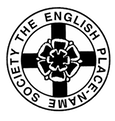Buslingthorpe
Major Settlement in the Parish of Buslingthorpe
Historical Forms
- Esetorp 1086 DB
- Esatorp c1115 LS
- Buselingthorp(e) Hy2 Chii 1291 ChorCart l12 RAiv 14 ValNor c1200 Pap 1254 Ch 1291 Cl 1295 FA 1305 1316
- Buselingthorp' 1282–3 RAix
- Buselingtorp l12 Kirkst 13
- Busselingthorp' 1340 MiD
- Buslingthorpa Hy2 Gilb 1409
- Buslingthorp 1232 Welles 1297,1300,1327 MiD 1333 AD 1447 LCStatutes 1526 Sub
- Buslyngthorp(e) 1313 YearBk 1327 SR 1328 Banco 1395 Peace 1431 FA 1459 Cl 1535 VEix 1552 Pat
- Buslyng Thorp 1400 Fine
- Bosellingtorpe c1235–50 RAiv
- Boselingthorp' c1295 RAii
- Boselyngthorp' 1310 ib
Etymology
Esetorp , Esatorp is a compound of ODan Ǣsa fern, or ODan Ǣsi masc. and þorp . The first of these pers.ns. is a short form of ODan Ǣstrith fem., while the second is a short form of such masc. names as ODan Ǣsbiorn , Ǣskil , etc., with initial Ǣs - resulting from the secondary East Scandinavian i -mutation of Ās - and pointing to Danish influence in the 11th century rather than in the period of initial Viking settlement.
In the Lindsey Survey of c1115, one Buselin is recorded as holding at Esatorp , and it is from his name that the first element of Buslingthorpe is derived. The name corresponds to OFr Buzelin , a diminutive formation of Continental Germanic origin. In France, this pers.n. forms the first element of Bosleni Pons 843, Boslenvilla 859, spellings which probably refer to Bouillancourt-en-Séry (dép. Somme), cf. G. Tessier, Recueil des actes de Charles II le Chauve , roi de France (Paris, 1943–1955), I, 60.

